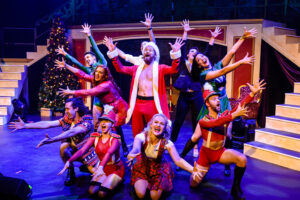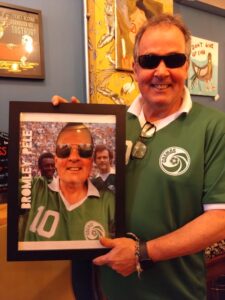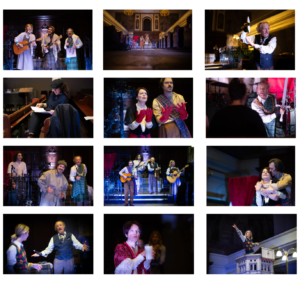Mary Kitson of Greenwich’s The Fan Museum transports The Weekender to Paris and explains the craftmanship of fan-making
“There were probably more people involved in the fan-making industry in Paris than in any other major city,” says Mary Kitson, deputy director and curatorial adviser at The Fan Museum of its latest exhibition, A Focus on Paris.
She explains that “fan makers in Paris and the surrounding region have produced some of the finest quality fans since the 17th century”, and the exhibition aims to present a picture of Paris as a “cultural hub of inventiveness and entrepreneurship using a series of themes”.
The exhibition also features a focus on the city’s 18th-century fan-making craft, its 19th-century fan painters, and its place at the cutting edge of architecture, aviation and fashion.
Mary says: “The Eiffel Tower, built for the Universal Exhibition in 1889, introduces a section featuring fans made as souvenirs for the various world exhibitions held in Paris in the second half of the 19th and early 20th centuries.
“In a year when the Olympic Games returns to Paris after a century, the event is celebrated with a fan showing ideal costumes for athletes in the 1924 Olympic Games. The Olympic Games provided a good focus to build an exhibition around.”
Although Mary usually avoids selecting a favourite feature of an exhibition, she answers our question on which item of A Focus on Paris stands out to her, explaining: “I would draw attention on this occasion to the very interesting fans made at the time of the French Revolution, which were much less expensively made than those used by ladies in preceding years.

“And, instead of the leaves of the fans displaying imagery that was pictorial and often drawn from history, the fans made in the Revolution often had paper leaves printed with propaganda or subjects that would have instantly resonated with the Parisian public, such as scenes from contemporary plays and the music and words of popular songs.”
Mary’s background as an art historian led her to “an interest in all the decorative arts, including fans”, she tells us.
In her role at The Fan Museum, she plays a part in the organisation of its exhibitions and is involved with all other matters concerning the collection, including “giving talks to special interest groups both in the museum and elsewhere around the country”, she says.
Mary explains that fans are objects with many diverse characteristics, she says: “A fan made for an entirely utilitarian purpose in one of the South Pacific islands, for instance, will look completely different to a highly crafted folding fan made towards the end of the 19th century.
“An exhibition at the museum might focus on fans of either type or perhaps on fans that are somewhere in between these extremes.”
There are a number of component parts to a fan, all of which “may impart fascination”, says Mary, who explains how the sticks, or monture, are made of materials ranging from ivory, tortoiseshell or mother of pearl to wood or plastic and “may be highly and intricately carved and embellished with gilding and jewels”.

Plus, the leaf – which may also be made of a variety of materials, including leather, textiles or paper – might be painted, embroidered or printed.
Mary says: “The museum’s exhibitions aim to show all types of fans, whether they are examples of fine craftsmanship or display an interesting image or, perhaps, have been associated with a notable personality.”
Of being located in Greenwich, Mary explains that “unlike many boroughs in London, Greenwich still has a distinct neighbourhood feeling”.
She says: “It is London and, yet not London. Its history and its park make it a pleasurable place for the museum to be situated in.”
12 Crooms Hill, Greenwich, SE10 8ER






